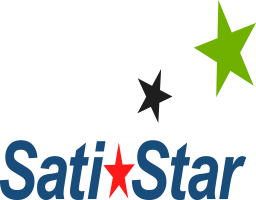Design of Experiments / Multi-variable Testing and Analysis (DOE, MVT, MVTA)
Overview
This statistical approach to improvement is extremely rapid, and enables us to identify those factors that are most important in influencing the output of your processes.
Scope And Deliverables
The project is divided into 3 phases:
In phase 1, a team is assembled to:
- Determine the process for which improvement will have a big bottom-line impact
- Decide upon the output measure(s) for the process (the response variable).
- Ensure that the measurement system is satisfactory
- Do some basic statistical process control to ensure that the process is stable
- Address any obvious potential solutions
In phase 2, a team is assembled to create the experimental design:
- Assemble as many people who may have any thoughts on what would affect the output variable. This often includes suppliers, customers, outside experts, and most importantly the employees who work within the process (production, maintenance, engineering, supervisory, etc.)
- Brainstorm improvement ideas. This often results in hundreds of ideas
- Narrow the list of brainstormed ideas down to the critical few that are practical, feasible, cost effective and rapid to implement. This typically reduces the large list down to between 5 and 25 ideas (or input variables) on which the experiment will be run.
- Studies have shown that only 25% of these ideas actually improve the process output. 53% make no difference, and 22% actually make the process output worse! Clearly it is important to test as many ideas as possible to increase your chances of finding those that enable you to achieve dramatic breakthrough
- Select the high and low values for each of the input variables for the experiment
- Select the type of experimental run plan. The key point is to keep the process output on average, exactly where it has historically been, but increase the overall variability of the output.
In phase 3, the team runs the experiment, collects the results and implements improvements:
- Production employees run the experimental runs through the regular production equipment
- Data is collected on the experimental results
- A rapid analysis is performed on the resulting data
- Process changes are quickly implemented
- Confirm that the changes worked!
DOE is just as applicable to front office and transactional processes as it is to shop floor processes. We have used DOE for applications as diverse as increasing retail sales, driving up magazine circulation, and driving down accounts receivables.
What We Will Do
- Assist in the selection of the prospective participants for this course.
- Conduct a single, 3 day DOE/MVTA training course.
- This course is designed to provide participants with the fundamental skills necessary for effective implementation of MVTA.
- Provide the post-course follow-up guidance for your MVTA teams through on-site facilitation. This will ensure that their future efforts are highly effective and efficient.
- Additional details on this workshop are provided in our DOE / MVTA Training Synopsis
What We Need You To Do
- Provide us with a list of prospective participants for this course.
- Ensure availability of these personnel for participation in the course, as well as requiring their commitment for implementing DOE/MVTA for at least 2 projects each following the training.
- Provide appropriate course meeting space, meals, refreshments, audiovisual equipment and materials.
- Ensure that participants are not disturbed during the training and implementation week.
WHAT PEOPLE ARE SAYING
SatiStar's Experience Makes The Difference!
